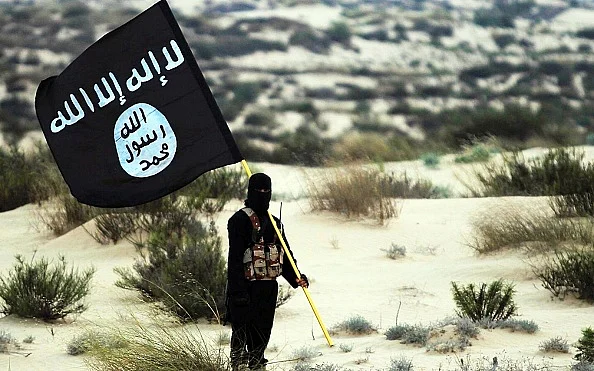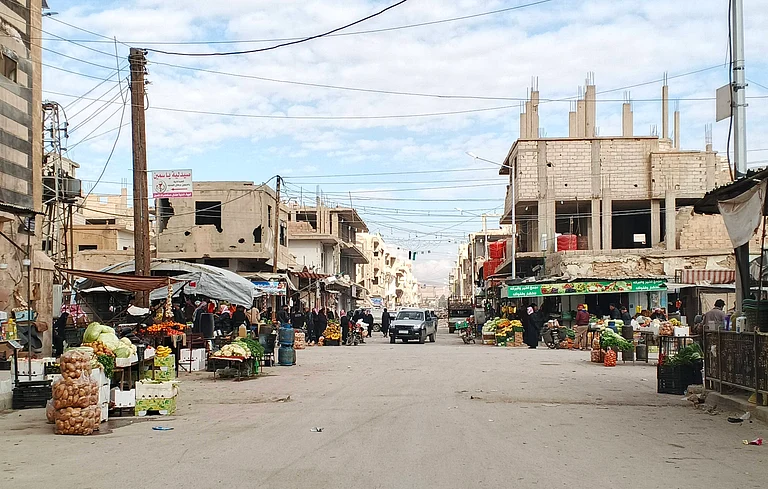On a Friday evening near Moscow, a deadly attack unfolded at a concert, resulting in at least 110 fatalities- one of the deadliest attacks on Russian soil in decades. According to the Associated Press (AP), The Islamic State group claimed responsibility. AP also concludes that US Intelligence agencies confirmed that the attack was carried out by the Islamic State's Afghan branch, ISIS-K.
This reflects the brutal capabilities of ISIS-K and exacerbates tensions given Russia's strained relations with the West after invading Ukraine in 2022. ISIS-K is an ISIS affiliate that emerged in eastern Afghanistan in 2014, known for its brutal tactics despite efforts by the Taliban and US forces to reduce its strength since 2018.
The Rise of ISIS and its Caliphate
The group known as ISIS (Islamic State of Iraq and Syria) or ISIL (Islamic State of Iraq and the Levant) emerged in the chaos following the U.S. invasion of Iraq in 2003. Its origins can be traced back to the Jordanian militant Abu Musab al-Zarqawi and the Iraqi branch of al-Qaeda formed in the aftermath of Saddam Hussein's ouster.
Al-Zarqawi's brutality and sectarian tactics ultimately led to a split from al-Qaeda's central leadership. His group rebranded as the Islamic State of Iraq (ISI) in 2006, though it remained a relatively small player amid the insurgency and sectarian violence gripping Iraq at the time. The U.S. troop surge and Sunni tribal militias turning against ISI dealt it a major blow.
However, ISI did not disappear. It regrouped and rebuilt its capabilities, taking advantage of the security vacuum in Iraq following the U.S. withdrawal in 2011 and the Syrian civil war erupting next door. In 2013, it grew assertive once more, advancing into Syria and changing its name to the Islamic State of Iraq and al-Sham (ISIS or ISIL).
Under the leadership of Abu Bakr al-Baghdadi, ISIS followed an aggressive guerilla strategy of car bombings, assassinations, and the capture of territory. By 2014, it had taken control of major cities like Fallujah and Mosul, seizing U.S.-supplied military equipment from the Iraqi army in the process.
On June 29, 2014, ISIS achieved a major milestone by declaring the establishment of a self-proclaimed caliphate - a state governed by a religious political and military doctrine dating back to the earliest Islamic empires. ISIS now simply calls itself the "Islamic State" (IS).
Al-Baghdadi was declared the caliph or supreme religious and political leader of the caliphate, which at its peak stretched from western Syria to the outskirts of Baghdad. The declaration galvanized support from radical Sunni jihadists worldwide who flocked to join ISIS in the territories it controlled.
The Brutality of the Caliphate
The imposition of the ISIS caliphate was a fierce and oppressive affair. The group followed an extremist interpretation of Sharia law, dispensing harsh punishments including public beheadings, amputations, and floggings for violating its moral code.
Local populations suffered horrific human rights abuses and atrocities at the hands of ISIS. Christians, Yazidis, Shia Muslims, and others were persecuted, driven from their homes, enslaved, and massacred in genocidal campaigns. ISIS also demolished ancient archaeological sites and destroyed invaluable historic and cultural artefacts.
The treatment of women in ISIS-controlled areas was especially appalling. Forced marriages, sexual enslavement, physical abuse, extreme restrictions on movement and dress, and lack of access to education or employment were norms under the group's misogynistic rules. Anyone resisting or deviating from their harsh laws risked torture or execution.
ISIS used social media and skillful propaganda to lure recruits and stoke fear. Grisly videos of beheadings and war crimes were distributed online to incite terror and attract radicalised followers to their cause—revenue streams like black market oil sales, extortion, and kidnapping for ransom financed their operations.
The Fall of the Caliphate
By early 2015, a U.S.-led coalition had formed to battle ISIS through airstrikes and support for local forces like the Iraqi army and Syrian Kurdish fighters. Russia also initiated its air campaign against ISIS later in 2015.
In a slow, grinding struggle, ISIS steadily lost control of the territory it once held. In July 2017, the coalition recaptured the major city of Mosul after a brutal 9-month battle. This dealt a critical blow, though ISIS continued clinging to pockets in eastern Syria.
In October 2017, the Syrian city of Raqqa - the de facto capital of the ISIS caliphate since 2014 - finally fell after a 4-month siege. ISIS had lost control of 98% of its territory but still carried out guerilla attacks and terror operations.
In late 2018, the U.S. and SDF forces were closing in on the final ISIS-held village of Baghouz in eastern Syria. Al-Baghdadi released an audio message admitting territorial defeat but vowing a "war of attrition."
Finally, on March 23, 2019, the last sliver of ISIS's physical caliphate was liberated. While ISIS had lost its caliphate, it vowed to continue an underground insurgency and terrorism across the region and globe. Indeed, ISIS sleeper cells and radicalized sympathizers in the West continued to pose a potent threat.

























